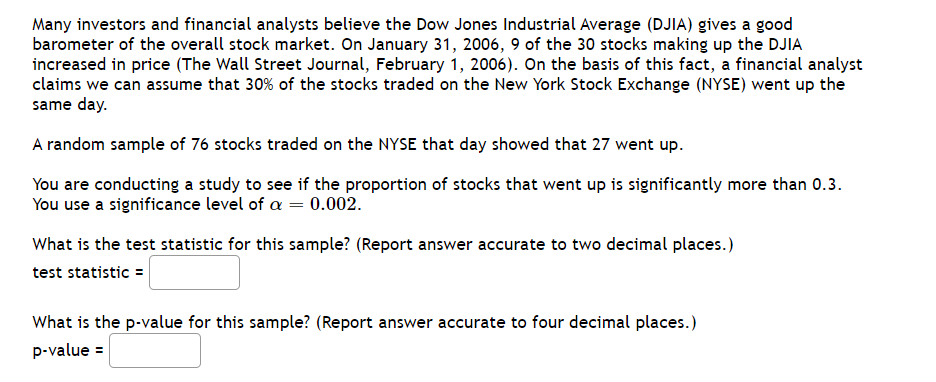Analyzing The Net Asset Value Of The Amundi Dow Jones Industrial Average UCITS ETF Distribution

Table of Contents
Factors Affecting the Amundi Dow Jones Industrial Average UCITS ETF's NAV
The Net Asset Value (NAV) of the Amundi Dow Jones Industrial Average UCITS ETF, like any ETF tracking an index, is directly influenced by several key factors. Understanding these factors is essential for predicting potential NAV fluctuations and managing your investment effectively.
-
The Dow Jones Industrial Average (DJIA) Performance: The most significant factor impacting the ETF's NAV is the performance of the underlying Dow Jones Industrial Average. A rise in the DJIA generally leads to an increase in the ETF's NAV, and vice versa. Daily movements in the DJIA directly translate into changes in the ETF's value.
-
Currency Exchange Rates: Since the Amundi Dow Jones Industrial Average UCITS ETF is denominated in Euros (UCITS ETFs are typically not in USD), fluctuations in the EUR/USD exchange rate will influence the NAV if your investment is in a different currency. A strengthening Euro against the US dollar will generally increase the NAV (for non-USD investors), while a weakening Euro will have the opposite effect.
-
Management Fees and Expenses: The ETF's management fees and other operational expenses are deducted from the assets under management, indirectly impacting the NAV. This expense ratio, expressed as a percentage, reduces the overall value of the ETF over time. A higher expense ratio will lead to a slower growth in NAV compared to ETFs with lower fees.
-
Dividend Distributions: The Amundi Dow Jones Industrial Average UCITS ETF distributes dividends received from the underlying companies in the DJIA. Before the ex-dividend date, the NAV reflects the value of these dividends. On the ex-dividend date, the NAV decreases by the amount of the dividend paid out per share, as the ETF's assets are reduced. This is a normal occurrence and shouldn’t be alarming.
- Daily fluctuations of the DJIA: Constant monitoring of the DJIA is necessary to understand short-term NAV changes.
- Currency fluctuations (if applicable): For non-Euro investors, currency risk adds another layer of complexity to NAV analysis.
- Expense ratio impact on NAV over time: The expense ratio acts as a drag on long-term NAV growth. Consider this cost when comparing ETFs.
- NAV changes around dividend distribution dates: Understand the timing of dividend distributions and their effect on your investment.
Analyzing the NAV's Historical Performance
Analyzing the historical NAV of the Amundi Dow Jones Industrial Average UCITS ETF provides valuable insights into its past performance and potential future trajectory. This analysis should be done in conjunction with studying the DJIA's performance to identify potential discrepancies and understand the ETF's tracking capabilities.
-
Utilizing online resources to access historical NAV data: Several financial websites and the Amundi website itself provide access to historical NAV data for the ETF.
-
Interpreting charts and graphs to identify trends: Visual representations of historical NAV data can reveal long-term trends, volatility, and potential turning points.
-
Understanding and interpreting tracking error: The difference between the ETF's performance and the DJIA's performance is known as tracking error. This difference may be due to various factors, including management fees, transaction costs, and the ETF's replication methodology.
The Significance of NAV in Investment Decisions
The NAV of the Amundi Dow Jones Industrial Average UCITS ETF plays a critical role in investment decisions. Investors use it to assess the ETF’s intrinsic value and make informed choices about buying, selling, and holding the ETF.
-
Using NAV to compare ETF value against other investments: NAV provides a standardized measure for comparing the ETF’s value with other investment options.
-
Identifying potential arbitrage opportunities based on NAV and market price discrepancies: Sometimes, the market price of the ETF might deviate from its NAV, creating potential arbitrage opportunities for savvy investors.
-
NAV’s importance during ETF purchases and sales: The NAV is a key consideration when deciding to buy or sell shares of the ETF.
Understanding the Amundi Dow Jones Industrial Average UCITS ETF Distribution Process
The Amundi Dow Jones Industrial Average UCITS ETF distributes dividends periodically, typically on a quarterly basis. Understanding this distribution process is crucial for managing your investment effectively.
-
Distribution frequency and payment dates: The ETF's distribution frequency and the exact payment dates are usually specified in the ETF’s documentation.
-
Calculation of dividend payouts per share: The dividend payout per share is determined by the total dividends received by the ETF, divided by the number of outstanding shares.
-
Tax implications for different investor jurisdictions: Dividend distributions are subject to taxes, and the specific tax implications vary depending on your location and investment structure.
Conclusion: Making Informed Decisions with Amundi Dow Jones Industrial Average UCITS ETF NAV Analysis
The Net Asset Value (NAV) of the Amundi Dow Jones Industrial Average UCITS ETF is influenced by various factors, including the performance of the DJIA, currency exchange rates, management fees, and dividend distributions. Regularly monitoring and analyzing the NAV, alongside the DJIA's performance, is crucial for making well-informed investment decisions. By understanding these factors and their impact, investors can better manage their risk and optimize their investment strategy. Regularly analyze the Net Asset Value (NAV) of your Amundi Dow Jones Industrial Average UCITS ETF holdings to optimize your investment strategy. For more detailed information, please refer to the and consult with a qualified financial advisor.

Featured Posts
-
 Porsche 956 Nin Tavan Asili Sergilenmesinin Nedenleri
May 25, 2025
Porsche 956 Nin Tavan Asili Sergilenmesinin Nedenleri
May 25, 2025 -
 Jenson And The Fw 22 Extended Collection Unveiled
May 25, 2025
Jenson And The Fw 22 Extended Collection Unveiled
May 25, 2025 -
 Monacos Royal Family Facing Corruption Allegations The Role Of The Princes Financial Advisor
May 25, 2025
Monacos Royal Family Facing Corruption Allegations The Role Of The Princes Financial Advisor
May 25, 2025 -
 Bbc Radio 1 Big Weekend 2025 Tickets How To Get Yours Now
May 25, 2025
Bbc Radio 1 Big Weekend 2025 Tickets How To Get Yours Now
May 25, 2025 -
 New Music Joy Crookes Shares Carmen
May 25, 2025
New Music Joy Crookes Shares Carmen
May 25, 2025
